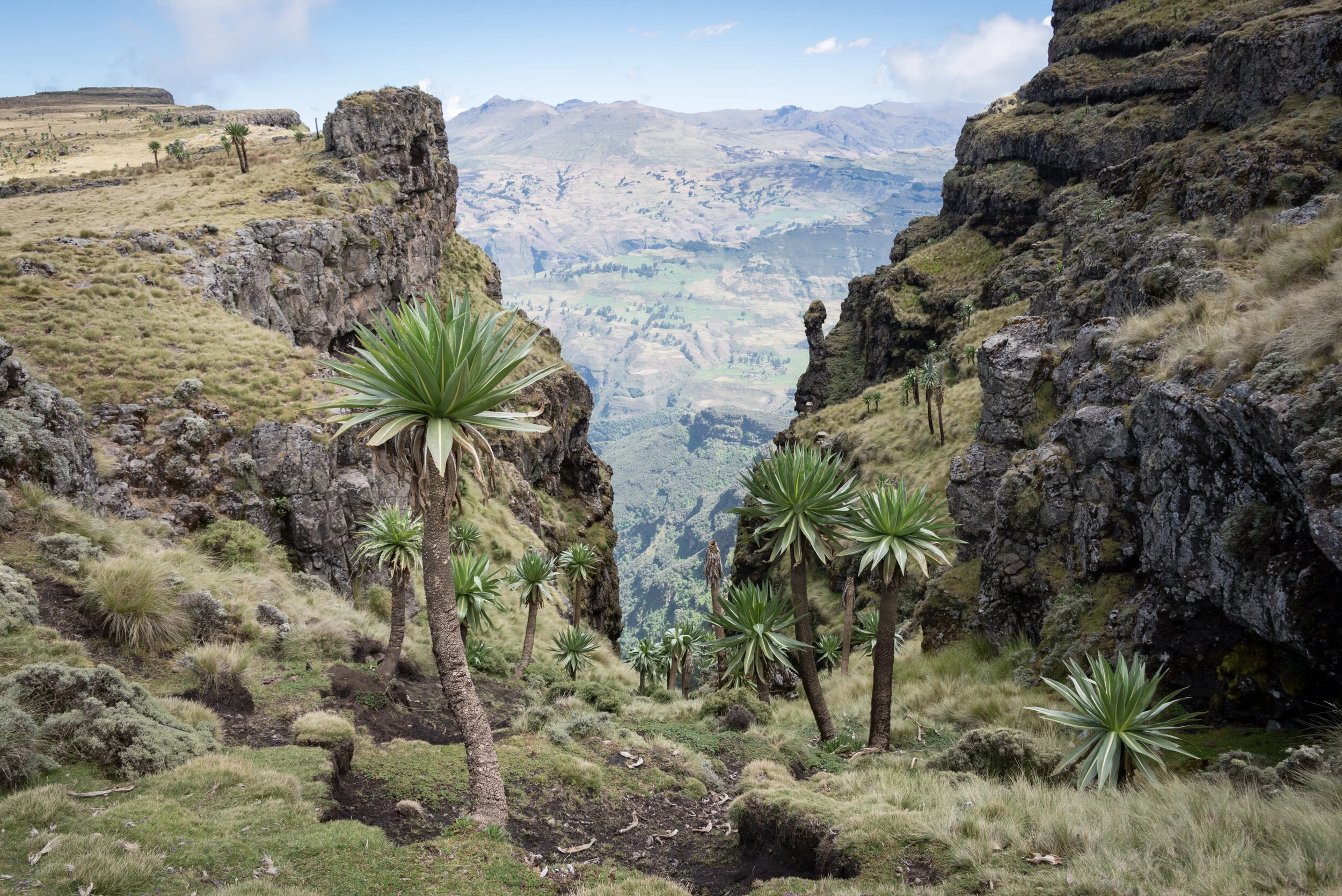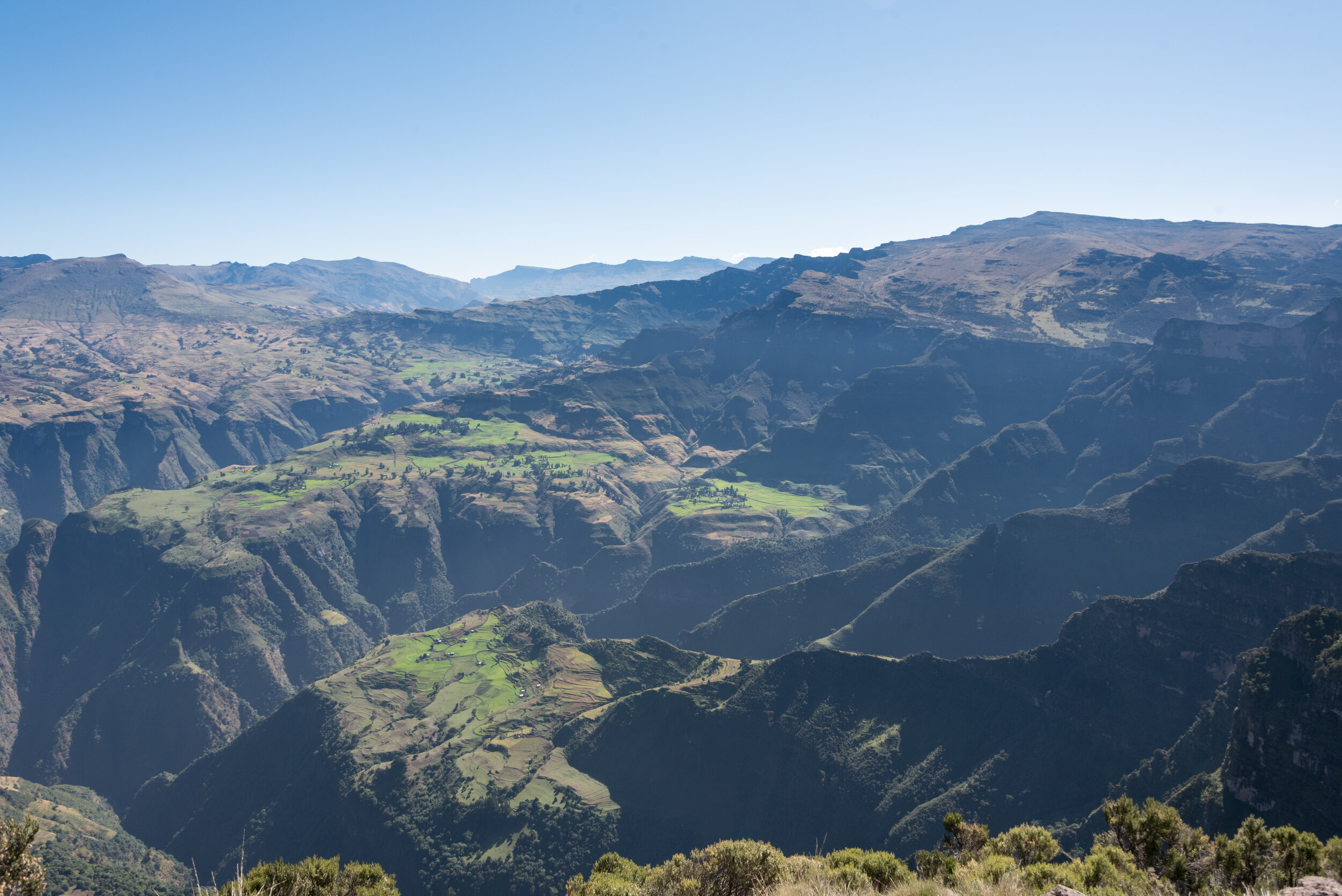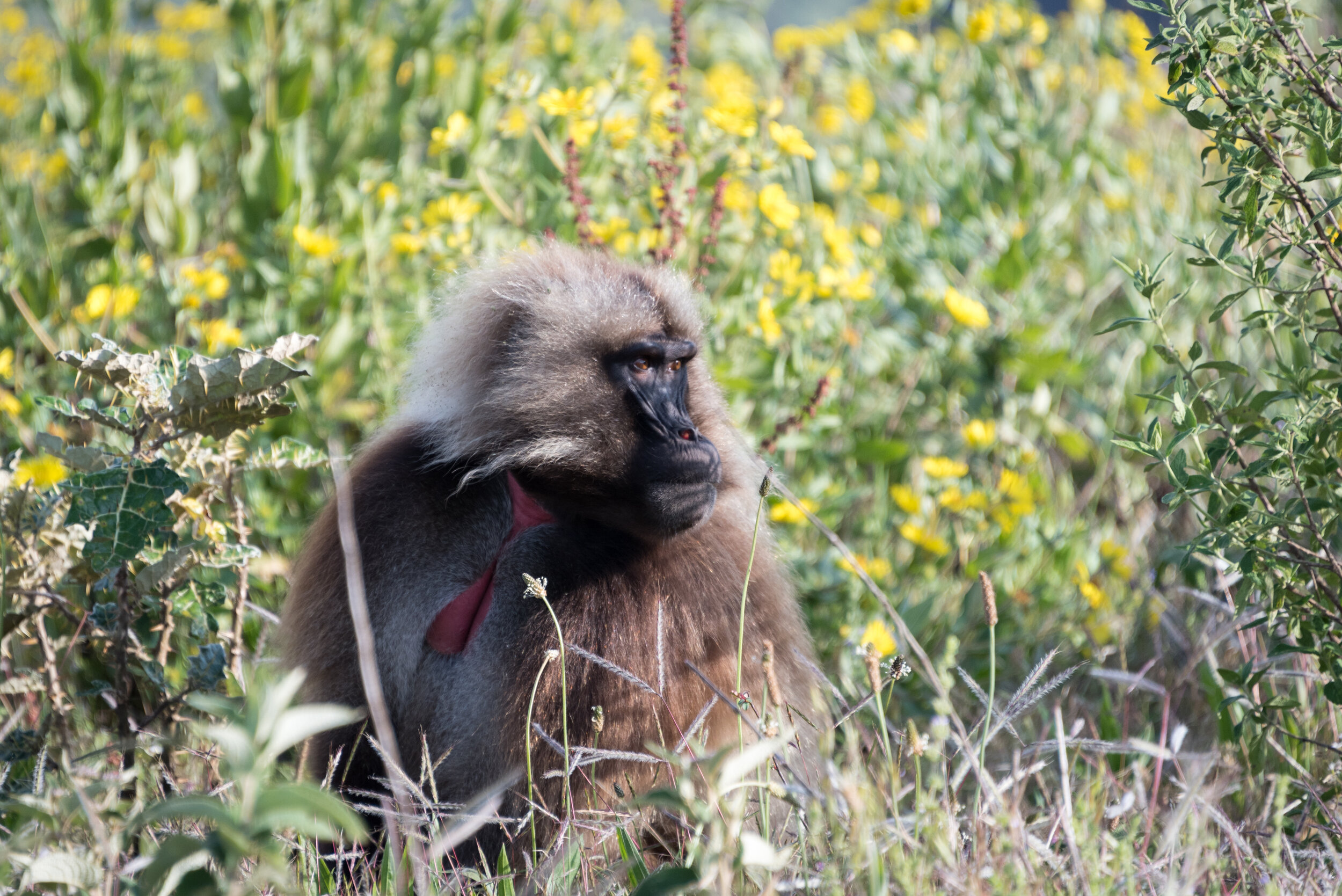Ethiopia’s north contains the de-facto tourist circuit for the major sights to be seen and experienced. Rather than start our tour of the country with a 2-day bus journey, we opted to fly to Gondar, an historical city that once contained the dwelling places of many a king, as evidenced by the remains of 17th century castles in the town center. Reading the guidebook, you might imagine an air of royalty still leftover, but there’s not. Aside from one delicious restaurant, and some very nice views outside of town (as is the case with many of Ethiopia’s high-altitude towns) there are few redeeming qualities of Gondar. It doesn’t look as though the money going into both the castles, and in particular the “beautiful” church outside of town is doing anything of value aside from lining corrupt officials’ pockets. Weeds are overgrown on the grounds, and buildings look several hundred years older than they actually are. Despite what the Lonely Planet may say, Gondar is not worth much time, nor are the sights worth the money.
Passing through Gondar though, is a small price to pay to get to the real prize, the Simien Mountains…almost. Unfortunately, you must also pass through Debark, where the national park office resides, along with a complete microcosm of Ethiopia’s systemic and cultural issues. Getting our park permits, arranging for lodging upon our return, and being introduced to our scout (non English-speaking bodyguard who shows you the way whilst brandishing his gun to any kids or creatures attempting to hassle us) was easy enough, all that was left was to get ourselves into the park, a twenty minute drive outside of town. Of course, the park office has no official transport to get solo trekkers to the entrance, but no matter, we could find a tuk-tuk to bring us there for a reasonable price, or so we thought. Upon leaving the park office, we were immediately bombarded by a large group of people telling us they would arrange our transportation for an absorbent about of money, a fairly standard scene in Africa, which we were plenty used to. Upon declining the offer however, we were berated for thinking we were allowed to take any other transportation, that theirs was the official transport and there were no other options. With each passing tuk tuk that stopped, the mob forcibly yelled at the drivers, undoubtedly threatening them if they dared pick us up. Even park office workers sheepishly pretended they couldn’t help us and scurried off, as the mob followed us wherever we went along the road. We finally had to cave if we wanted to get to the park that day, and of course were picked up in the “official” park vehicle, which was a shitty old Toyota truck with a ladder hanging out the back. Begrudgingly, we made our way to the park in the truck, where we were dropped off somewhat near where we wanted to go, after another argument with the driver.
A great start to a peaceful 3-day trek!
At long last out into the mountains, we enjoyed the cliffside trek amongst deep green forests, dramatic formations in the distance, Geladas and other baboons, and no mobs…for now. Our scout brought us to lookout points as we began to understand and communicate through grunting and pointing. Words are overrated, anyways. Our first camp was situated overlooking a deep valley, and sliding under the protection of the tent was a welcome respite from the day’s chaos. The stars shown brightly in the sky above as darkness fell, though the night brought with it more adventures as the bathrooms had clearly been neglected since the day they were installed by the Austrians a decade ago. Dodging landmines on your way to find a safe spot to relieve yourself isn’t the most fun…
Day 2 brought with it the good and the bad of Ethiopia. A short hike in the morning led to a spectacular waterfall viewpoint, and large rock formations continued to dot the horizon as we hiked up and along the lush green cliffs. We spotted deer and more Geladas, their bright red chests shining in the sunlight as they chased each other down the cliffs. Lobelia trees, which looked like a cross between a cactus and a Joshua tree, stood proudly along the rolling hills and along rushing creeks. Speaking of creeks, at one point we came upon a river that seemed to be flowing a bit higher than normal, with no rocks or footbridges to enable passage. It was here that we encountered the second Ethiopian mob, the mule mob. There they sat, waiting for you to pay them to walk 20 feet across the river atop their mule. At this point, I’d have enough of these tactics, and I set off up river to look for a better spot to cross. Our scout seemed to pick the most difficult and longest section to make the attempt, at which he failed when the water reached his thighs, all the while the mob was yelling who knows what. We waited for some time before another group caught up to us, their guide braving a path across the river, after which the mob began yelling and picking up rocks to throw at him for showing the way. Such a welcoming and friendly folk, those Ethiopians. We forded the river sans mule, and made our way towards the next camp, though the copious amounts of injera and lentils had finally caught up with us, making the next 2 hours quite uncomfortable on our stomachs, to say the least.
Our 2nd camp provided a panoramic view of the mountains surrounding, interrupted only by the heaps of trash, feces, and toilet paper throughout the camp. It looks as though an outside entity came in and set up all the necessary infrastructure for the national park, including camps, lodging, and facilities, then left it to its home country to be promptly looted, neglected, and abused. It looks this way because that’s exactly what happened. It’s quite sad, and slightly infuriating, to see. Scouts, guides, bus drivers, you name it, treat their beautiful country like a trash dump. Littering is second nature, even in the national park. I am unsure as to why nobody is telling this story of Ethiopia. The pictures you’ll see, in guidebooks and even in this blog, will be of a pristine looking country, there will be no mention of the neglect, the incessant confrontational actions of the people, or the general disregard of common courtesy, both to tourists and fellow countrymen alike. During my many bus rides, tuk-tuks, and car transport, I saw not less than half a dozen fights in the streets, ranging from teen angst to domestic violence. To tell the real story of Ethiopia is to mention both the eye-opening, and probably surprising to many, beauty of the place along with the generally unpleasant experiences that go with. Perhaps the fact that most every tourist is on some sort of guided tour, shielded from the reality of truly travelling through the country, contributes to the lack of the full story.
The 3rd day, now with stomach issues in full swing, was undoubtedly the most beautiful. We hiked to the Imet Gogo viewpoint, the rocks jutting out into the vast, green expanse below, 360-degree views of cliffsides, rivers, canyons, and forests. We sat in peace as we cliff-hopped to viewpoint after viewpoint, doing our best to outrun the incoming fog, the chasing children, and screaming geladas. The riverside camp brought with it a much needed foot-bath, dinner served in our tent, and a milky-way sky that no stomach ache or screaming Ethiopian could distract from. After an attempt by a local cook to provide half the meals we paid for and another attempt by the same cook to pretend like he lost an item I let him borrow, along with witnessing a 30 person almost-brawl outside the unofficial truck we were being smuggled back into town on, we finally escaped the most beautiful nature Ethiopia has to offer, though we were nowhere near the end of the mishaps we’d encounter on the trip.
Ah, Ethiopia. A beautiful place to see, but a rough place to be…













